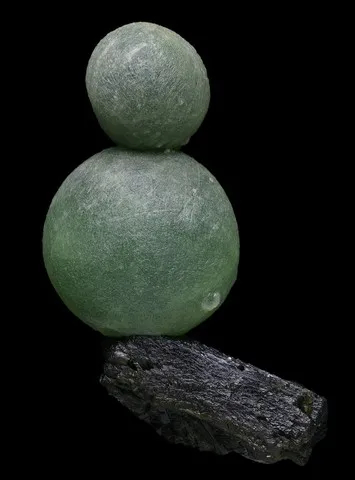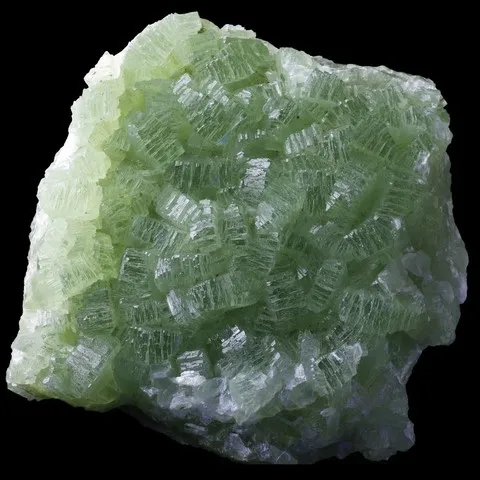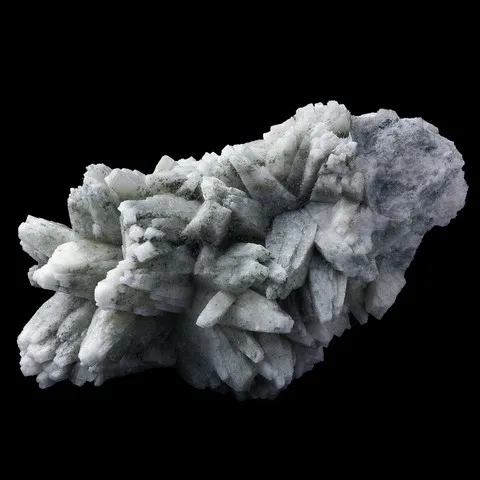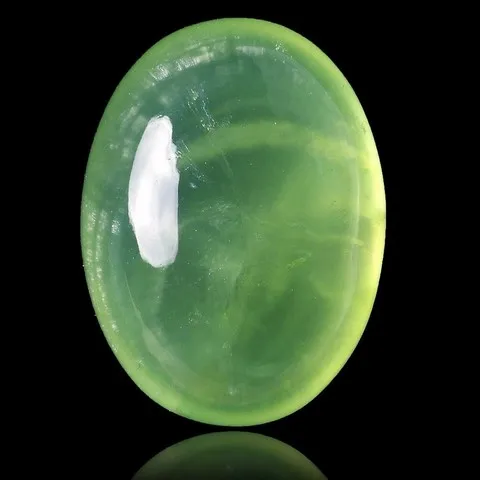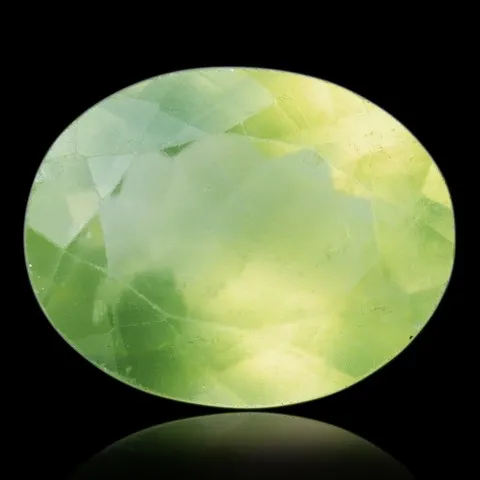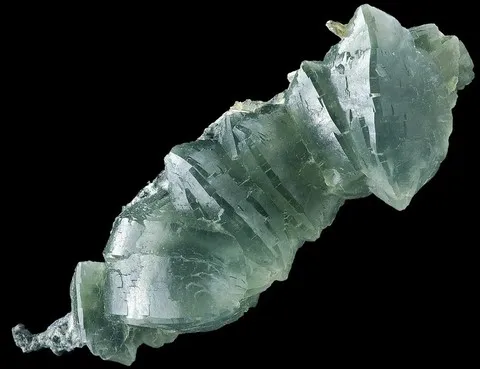PREHNITE
Class : Silicates
Subclass : Inosilicates
Crystal system : Orthorhombic
Chemistry : Ca2Al2Si3O10(OH)2
Rarity : Quite common
Prehnite is an hydrothermal mineral of cavities in basic volcanic rocks where it is associated with zeolites, apophyllite and calcite. It is also a mineral of the Alpine clefts, more particularly in the Oisans (French Alps), and certain copper deposits in association with the native copper (Lake Superior). It is a mineral that owes its name to Colonel Hendrick von Prehn who discover near the Cape of Good Hope in South Africa in the XVIIIth century. Transparent to translucent, the prehnite is colorless to yellowish-white and often pale green. It is rare in prismatic or tabular crystals and commonly forms crystalline reniform to stalactitic associations, its most common facies being the grouping of flattened crystals forming half-spheres or helmets. Crystals are rare, they are sought after by collectors, it is also a mineral cut for jewelry, including cabochons or also used as an ornamental stone.
Photo : Prehnite balls on epidote from Kayes Region, Mali © Rémi Bornet
Prehnite in the World
Prehnite in France
French Alpine fissures have given some of the most beautiful specimens in the world. La Combe de la Selle near Bourg d'Oisans (Isère) is famous for its lamellar crystals with rhombic contours, and its hemispherical aggregates "in helmets" (right picture) with sometimes a diameter of more than 5 cm and often associated with asbestos. Nearby, the Balme d'Auris also provided excellent crystals. It is also found in the Aure Valley in the Hautes-Pyrénées, Col d'Osquich in the Pyrénées-Atlantiques, and more anecdotally in many other small localities.
Right photo : Prehnite helmets from Combe de la Selle, Isère, France © Rémi Bornet
Twinning and special crystallizations
While no twinning is observable, in India, particularly in the basalt deposits of the Maharashtra region, remarkable perimorphoses of laumontite into prehnite are found. This phenomenon occurs when prehnite crystallizes by perfectly matching the external contours of the laumontite crystals, which then disappeared, probably dissolved by weathering or hydrothermal circulation. This is therefore not a molecular replacement of the original mineral (pseudomorph), but a natural molding of its shape. The resulting perimorphoses faithfully preserve the typical prismatic habit of laumontite, although their composition is now exclusively that of prehnite. These specimens, both delicate and intriguing, illustrate a geological episode where mineral evolution is expressed through imprints, providing a fossil snapshot of the morphology of a mineral that is now absent.
Right photo : Perimorphosis of prehnite on laumontite from Malad Quarry, Malad, Mumbai Suburban district, Maharashtra, India © Rémi Bornet
Fakes and scams
No fake known for this species.
Hardness : 6 to 6.5
Density : 2.8 to 2.95
Fracture : Irregular
Streak : White
TP : Translucent to semi-transparent
IR : 1.611 to 1.665
Birefringence : 0.021 to 0.033
Optical character : Biaxial +
Pleochroism : Weak
Fluorescence : None
Solubility : Hydrochloric acid
Magnetism : None
Radioactivity : None

